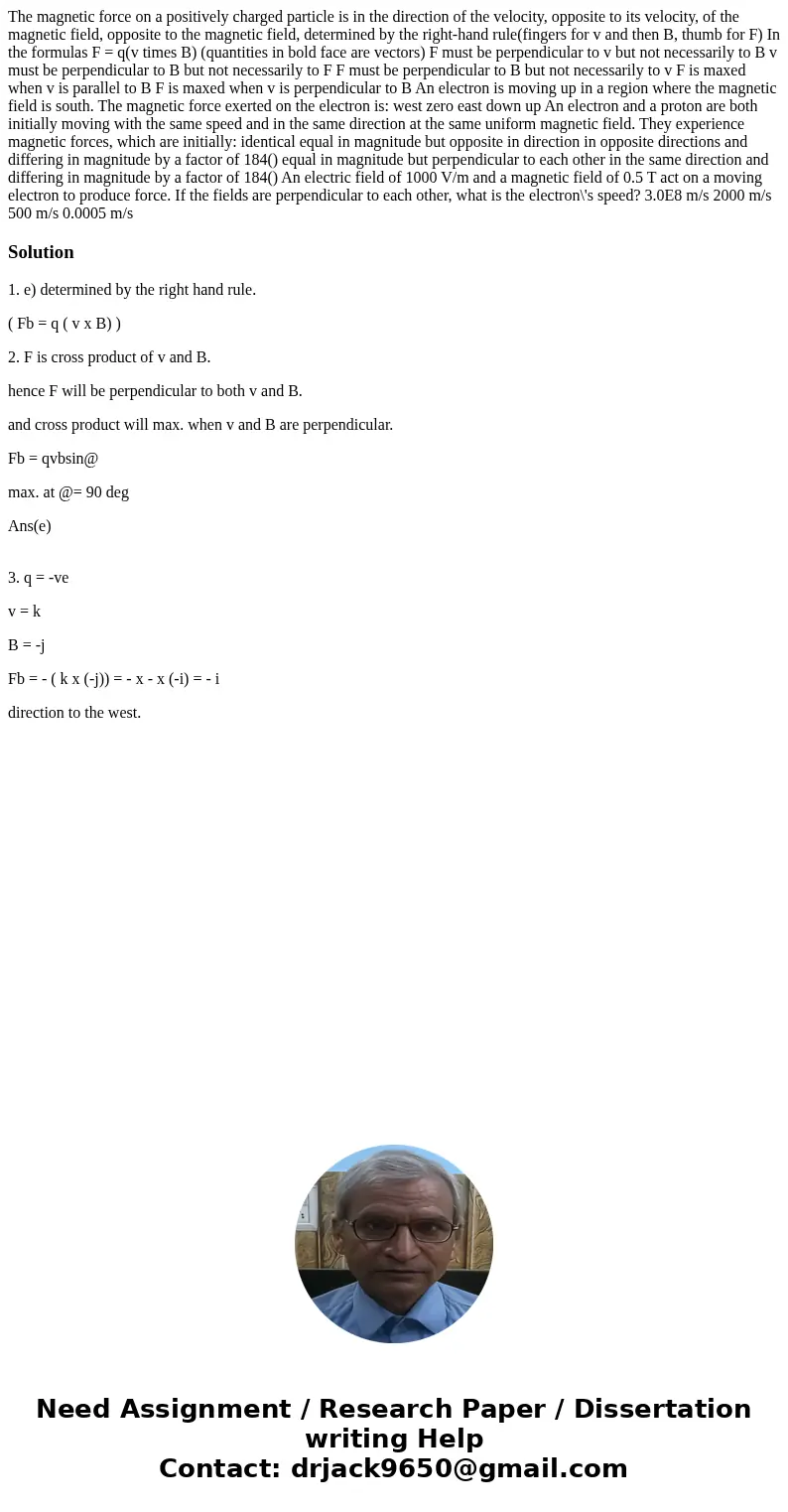The magnetic force on a positively charged particle is in th
The magnetic force on a positively charged particle is in the direction of the velocity, opposite to its velocity, of the magnetic field, opposite to the magnetic field, determined by the right-hand rule(fingers for v and then B, thumb for F) In the formulas F = q(v times B) (quantities in bold face are vectors) F must be perpendicular to v but not necessarily to B v must be perpendicular to B but not necessarily to F F must be perpendicular to B but not necessarily to v F is maxed when v is parallel to B F is maxed when v is perpendicular to B An electron is moving up in a region where the magnetic field is south. The magnetic force exerted on the electron is: west zero east down up An electron and a proton are both initially moving with the same speed and in the same direction at the same uniform magnetic field. They experience magnetic forces, which are initially: identical equal in magnitude but opposite in direction in opposite directions and differing in magnitude by a factor of 184() equal in magnitude but perpendicular to each other in the same direction and differing in magnitude by a factor of 184() An electric field of 1000 V/m and a magnetic field of 0.5 T act on a moving electron to produce force. If the fields are perpendicular to each other, what is the electron\'s speed? 3.0E8 m/s 2000 m/s 500 m/s 0.0005 m/s
Solution
1. e) determined by the right hand rule.
( Fb = q ( v x B) )
2. F is cross product of v and B.
hence F will be perpendicular to both v and B.
and cross product will max. when v and B are perpendicular.
Fb = qvbsin@
max. at @= 90 deg
Ans(e)
3. q = -ve
v = k
B = -j
Fb = - ( k x (-j)) = - x - x (-i) = - i
direction to the west.

 Homework Sourse
Homework Sourse